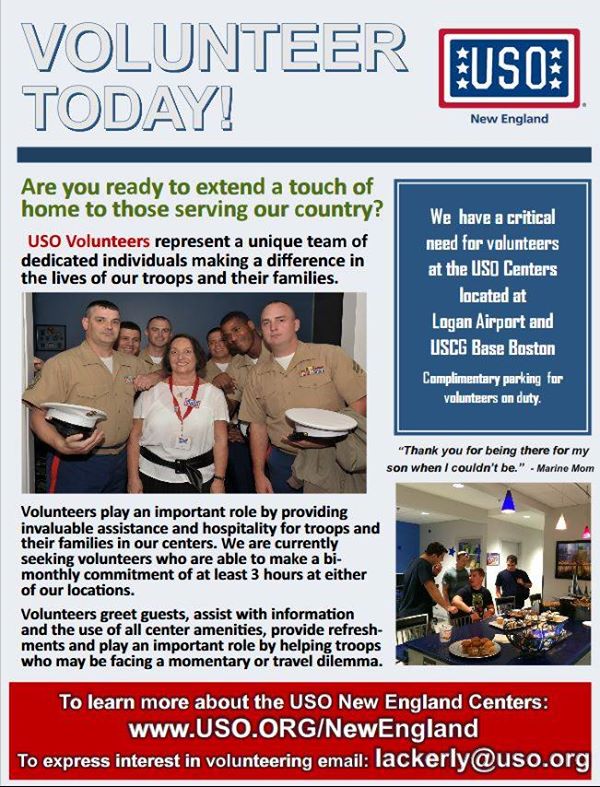Since 1990, volunteers have played a critical role in Veterans Inc.’s success and growth. As a non-profit organization, they simply could not provide the level of services that they do without your assistance. The countless hours of time and talent, in addition to monetary and in-kind support, ensure that Veterans Inc. can continue its mission to improve the lives of veterans and their families and, ultimately, save lives.
Here’s how you can you help our veterans and their families at Veterans Inc.:
Driver – Call (508) 791-1213 ext. 196 for more information.
Events & Programs for our veterans – Help by sponsoring events for the residents of their housing programs, including but not limited to seasonal/holiday parties, cookouts, as well as the annual Stand Down in June and their annual Holiday Harvest.
Facility & Maintenance Projects – They always need people to help with repairs and maintenance of their grounds and facilities.
Food Services – Help hand out food to our veterans and their families in Worcester County at their food pantry or help serve or sponsor a meal in the hot meals program. Their food pantry is open on the second and fourth Thursday of every month, 10:00 a.m. to 2 p.m. The hot meals program serves lunch and dinner 365 days a year.
Fundraising Events – Assist with the annual Freedom Song Festival, Golf Tournament, Pancake Breakfast and Road Races, as well as the biennial Gala Military Ball. Volunteers help with event planning, management and promotion.
Greeter – Be the first one to greet the donors and volunteers at their headquarter site in Worcester. Help log in donations and pass along others ways of how the community can help Veterans Inc.
Office Support – Help Veterans Inc. process seasonal donations, prepare bulk mailings, and manage other special projects.
Recreational Activities – Spend a few hours sponsoring a recreational activity for residents. Examples are movie nights, basketball or softball games, tennis, fishing, nature walks, and board game tournaments.
Run a Donation Drive – Collect items on their Wish List, which are needed for our veterans. Food, clothing, toiletry and gift card drives in particular are very helpful. PLEASE NOTE: If you would like to run a donation drive, please contact volunteer@veteransinc.org
Tutor/Teach – Have experience teaching a subject or activity? Tutoring individuals or teaching a class is an opportunity to change the outlook of another person. Conduct a class in health, wellness, nutrition, fitness and more. Background and experience in the subject matter are required.
Something else? If you have a talent, skill or even a NEW volunteer opportunity to share with Veterans Inc., please do not hesitate to contact them! Contact volunteer@veteransinc.org
All volunteers are required to attend an Orientation to qualify for participation at Veterans Inc. Orientation includes a brief presentation and overview of Veterans Inc. *GROUPS require the Group Leader to attend.*
*Please note: Veterans Inc. does not accept Court Mandated Community Service*
VOLUNTEER ORIENTATION SCHEDULE
March 31st, 2015 (Tuesday) Time: 6:00 pm
April 29th, 2015 (Wednesday) Time: 6:00 pm
May 27th, 2015 (Wednesday) Time: 6:00 pm
June 24th, 2015 (Wednesday) Time: 6:00 pm
Where: Veterans Inc. Headquarters, 69 Grove Street in Worcester
*Photo ID required at Orientation (MA License)
Space is limited, please register in advance by contacting:
(508) 791-1213 ext. 196
or emailing volunteer@veteransinc.org



